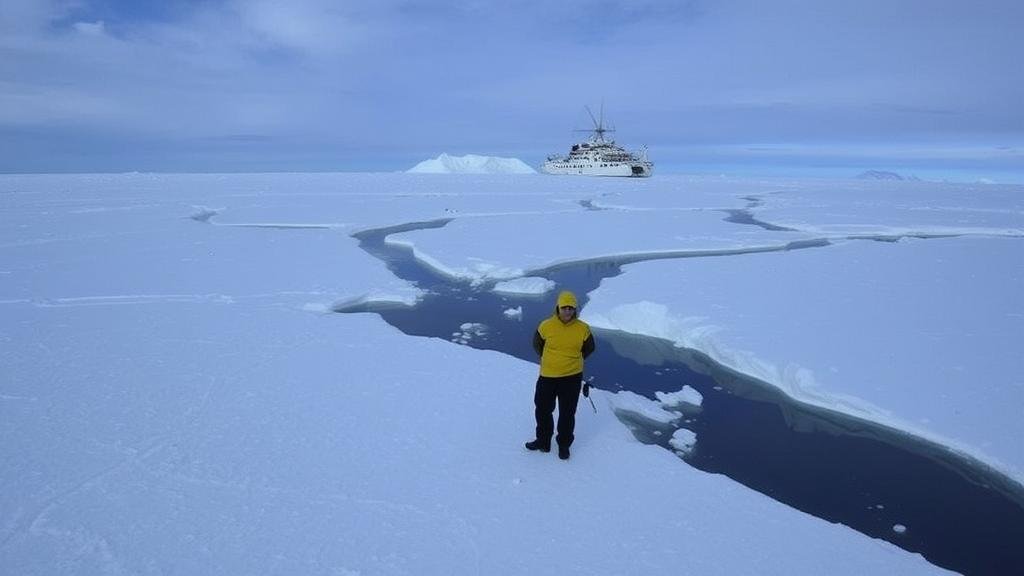Investigating the icy expanse of Antarctica for signs of civilizations predating known history.
Investigating the Icy Expanse of Antarctica for Signs of Civilizations Predating Known History
Antarctica, often perceived as a desolate and inhospitable land covered in ice, has long captivated the imagination of researchers and historians alike. The notion that this frozen continent may hold remnants of ancient civilizations, perhaps predating our recognized historical records, is a topic that draws both intrigue and skepticism. This article delves into the evidence, theories, and explorations that propose the existence of pre-known histories within Antarctica.
Historical Context of Antarctic Exploration
The exploration of Antarctica began in earnest in the 19th century. Notable expeditions include:
- James Rosss expedition (1839-1843) which first mapped parts of Antarctica.
- Ernest Shackletons famous Endurance expedition (1914-1916) that sought to cross the continent.
These early journeys primarily aimed to chart the icy landscapes and document flora and fauna, leaving little room for the investigation of potential ancient civilizations. But, as technology advanced, so did our capacity to analyze and interpret the geological and archeological features of this vast land.
Theoretical Frameworks and Speculative Evidence
Some researchers postulate that Antarctica may have once been a warm, habitable environment. Geological evidence, such as the discovery of coal deposits and fossils indicative of a temperate climate, suggests that this continent was not always frozen. A pivotal study posted in the Geological Society of America Bulletin in 2012 indicated that Antarctica was vegetated as recently as 50 million years ago.
Plus, intriguing theories suggest the possibility of advanced civilizations existing on the continent before it was covered in ice. This is bolstered by:
- Historical anomalies in ancient texts that reference the existence of lands beyond known continents.
- Familiarity with advanced mathematics and astronomy in ancient cultures, hinting at far-reaching knowledge and potentially shared across societies.
Supporters of these theories often reference frameworks such as the Earth Crust Displacement Theory by Charles Hapgood, proposed in the 1950s, which suggests that Earths crust has shifted over millions of years, relocating various land masses.
Indicators of Ancient Human Presence
Cases of alleged archaeological finds in Antarctica include mysterious geometric patterns and anomalies detected via satellite imaging, which some claim could represent ancient constructions. For example, in 2016, reports emerged of what appeared to be pyramidal structures, leading to speculation about their origin.
Notably, in 2021, a team of climate researchers discovered what they described as ancient microbial mats underneath the Antarctic ice, suggesting that life forms thrived in its primordial past.
Challenges to Antarctic Archaeology
Despite the compelling theories, the chances of finding conclusive evidence of past civilizations in Antarctica face considerable challenges:
- Harsh weather conditions restrict year-round exploration.
- Significant ice coverage makes archaeological excavation complex.
- Political treaties safeguard the continent, mainly for scientific research, limiting exploratory missions.
Also, any findings would necessitate stringent verification through methods like carbon dating and geological assessments to establish authentic historical narratives.
Real-World Implications and Future Research
The search for signs of ancient civilizations in Antarctica not only feeds into the narratives of our past but also informs current understanding of human adaptation and resilience amidst changing climates. Investigations into how ancient societies potentially thrived under different climatic conditions could offer insights into present-day challenges of global warming.
Planned projects over the coming years, such as more advanced satellite imaging and ice core sampling, will continue to enhance understanding of Antarctica’s complex geological and climatic history. These approaches will allow researchers to piece together any potential historical civilizations existing before recorded history.
Conclusion
The icy expanse of Antarctica may not appear as a cradle for civilization at first glance. But, ongoing research and exploration suggest that there may be histories lying beneath its frozen surface waiting to be uncovered. As technology and methodologies advance, the hope remains that we will one day unlock the secrets of this enigmatic continent, revealing perhaps an entirely new perspective on human history.
In sum, while the idea of ancient civilizations in Antarctica may evoke skepticism, the intriguing clues left by the past beckon further investigation. Embracing a multidisciplinary approach that combines geology, climate science, and archaeology will be vital in exploring this uncharted territory.


